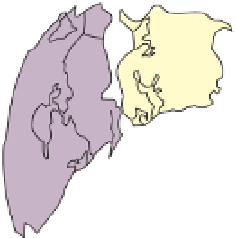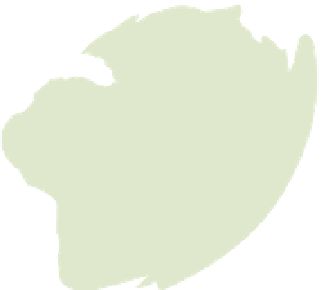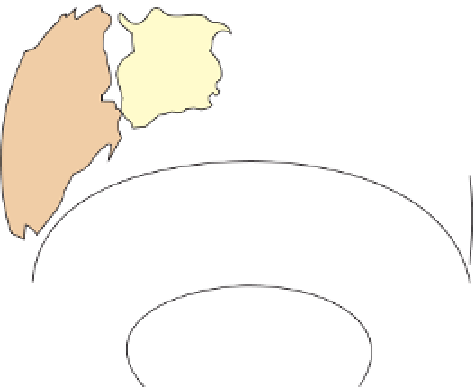Geology Reference
In-Depth Information
Ancient orogenic belts
12
12
12
Ancient orogenic belts
96
97
The study and interpretation of ancient
orogenic belts suffers from the disad-
vantage that no information is avail-
able from ocean-floor magnetic-stripe
data (
see
Chapter 3 and Figures 3.5
and 3.6), and therefore, unlike more
modern belts, it is not possible to track
the movements of pieces of continental
crust by this means. Some information
about former positions of continents
is available from continental palaeo-
magnetic data, but this only gives the
palaeolatitude at a particular time,
and the palaeolongitude can only be
guessed at. Another problem is that, the
further one goes back in geological time,
the more the contemporary geologi-
cal record is obscured by either cover
of younger rocks, removal by erosion,
or disruption by subsequent tectonic
events. Nevertheless, many ancient
belts have been studied in considerable
detail and much is known about their
history; however, their tectonic interpre-
tation has often proved controversial,
and in many cases has been subject to
bewildering changes over the years!
Three comparatively well-known
belts are briefly described as examples:
the British sector of the Palaeozoic
Caledonian belt; the Mid-Proterozoic
Grenville belt of eastern Canada; and
the Early Proterozoic Trans-Hudson belt
of Canada. The Archaean poses particu-
lar problems of interpretation and the
question of whether, or to what extent,
the plate tectonic model is applicable
to that Era has been much discussed.
In the final part of this chapter, this
problem is addressed, taking the
Superior Province of the Canadian
shield and the North Atlantic craton
in southern Greenland as examples.
Ocean in the Cenozoic Era have been
restored. Figure 12.1 shows a recon-
struction of the relative positions of the
continents during the mid-Palaeozoic,
from which the Caledonian-Appala-
chian orogenic belt (shown in pale red)
can be seen to represent a collisional
orogen between
Laurentia
(North
America plus Greenland),
Baltica
(northern mainland Europe) and two
(possibly joined) microplates, East
and West
Avalonia
. According to this
reconstruction, the northern part of
the British-Irish sector has resulted
from collision between Baltica and
Laurentia, whereas the southern part,
including England and Wales, has
a separate origin, being credited to
The British sector of the
Caledonian orogenic belt
The Caledonian orogenic belt, known
usually as the
Caledonides
, extends
from northern Norway and East Green-
land, on opposite sides of the North
Atlantic, through the British Isles, to
Newfoundland and eastern North
America, where it merges with the
Appalachian belt
. The original extent
of the belt only becomes obvious when
the effects of the opening of the Atlantic
Siberia
Caledonian
belt
Figure 12.1
Mid-Palaeozoic
reconstruction of the continents
showing the Caledonian-
Appalachian orogenic belt resulting
from collision between Laurentia
and Baltica in the northern sector,
and East and West Avalonia in the
southern sector. Note the positions
of Scotland (S), England (E) and
Greenland (Gd). Arrows show
convergence direction. Based on a
reconstruction by Dalziell (1997).
Laurentia
Baltica
Gd
S
East
Avalonia
N America
E
Africa
Ar
West
Avalonia
GONDWANA
Appalachian
belt
South
America
India
S
P

























Search WWH ::

Custom Search